There are more than 43,000 species of spiders worldwide. Of all these species, 30 are known to be venomous and can kill humans, and children are more sensitive to these spiders’ bites than adults.
The venomous spider squeezes the venom through its hollow fangs into the victim, enough to cause paralysis. Its hollow fangs work more like a hypodermic needle, injecting substances or extracting fluid. Now that you have this information you may be wondering, which spider is the deadliest spider?
Spider bites rarely cause human deaths unless left untreated. At least seven people die every year from spider bites, according to the International Journal of Scientific and Technology Research.
Let’s have a look at the world’s deadliest spider.
The Deadliest Spider In The World: The Sydney Funnel-Web Spider
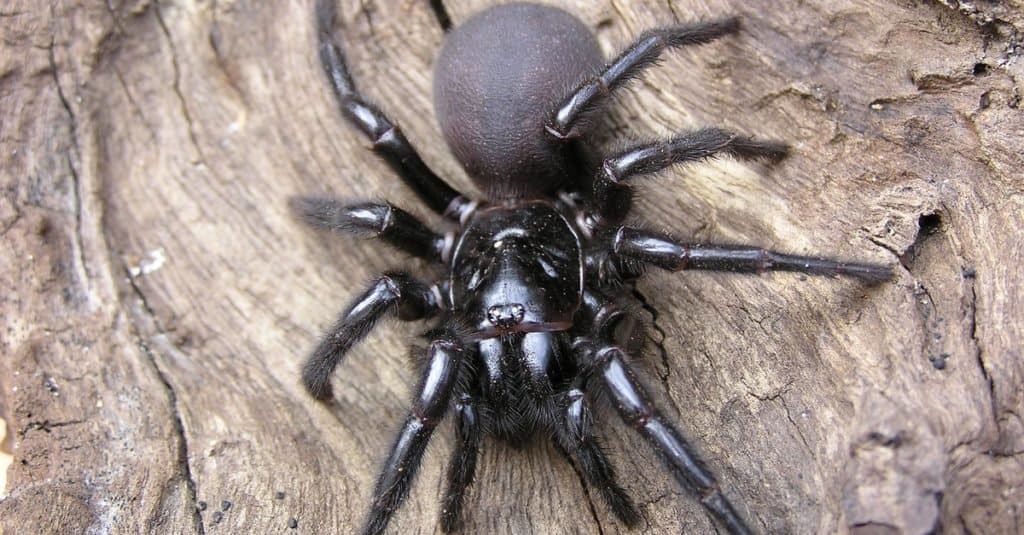
The Sydney funnel-web spider is considered deadly because its venom kills within a few minutes.
©James van den Broek/Shutterstock.com
The Sydney funnel-web spider (Atrax robustus) is the most dangerous spider on the planet. This species is native to eastern Australia. The Sydney funnel-web spider is considered deadly because its venom kills within 15 minutes.
A male Sydney funnel-web spider also has more powerful venom than the female; the male is often found roaming alone while the female lives in colonies of around 100 spiders.
At least 40 different species of Sydney funnel-web spiders exist worldwide. Although some of these species are not venomous, their bites should not be ignored because some of them may contain slow-acting venom.
Sydney Funnel-Web Spider: Appearance
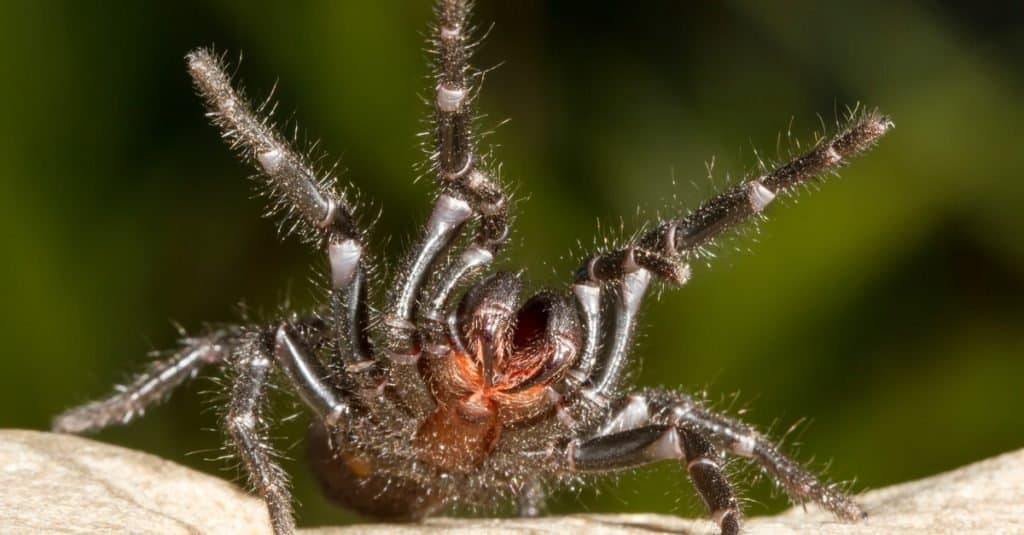
The world’s most venomous spider, the Sydney Funnel-Web Spider, is in a defensive stance.
©Ken Griffiths/Shutterstock.com
Sydney Funnel-Web spiders exhibit color variation, ranging from black to brown, with a shiny thorax and head. Their cephalothorax is covered by an almost hairless, smooth, and glossy carapace. Sydney funnel-web spiders are often mistaken for tarantulas because they strongly resemble them.
Sydney funnel-web spiders have larger venom sacs and fangs. The fangs point straight down without crossing each other. They also have protruding microorganisms at the rear abdominal end. You will notice a mating spur projection between the male’s second pair of legs. Both males and females have velvety hair covering their abdomens.
Behavior
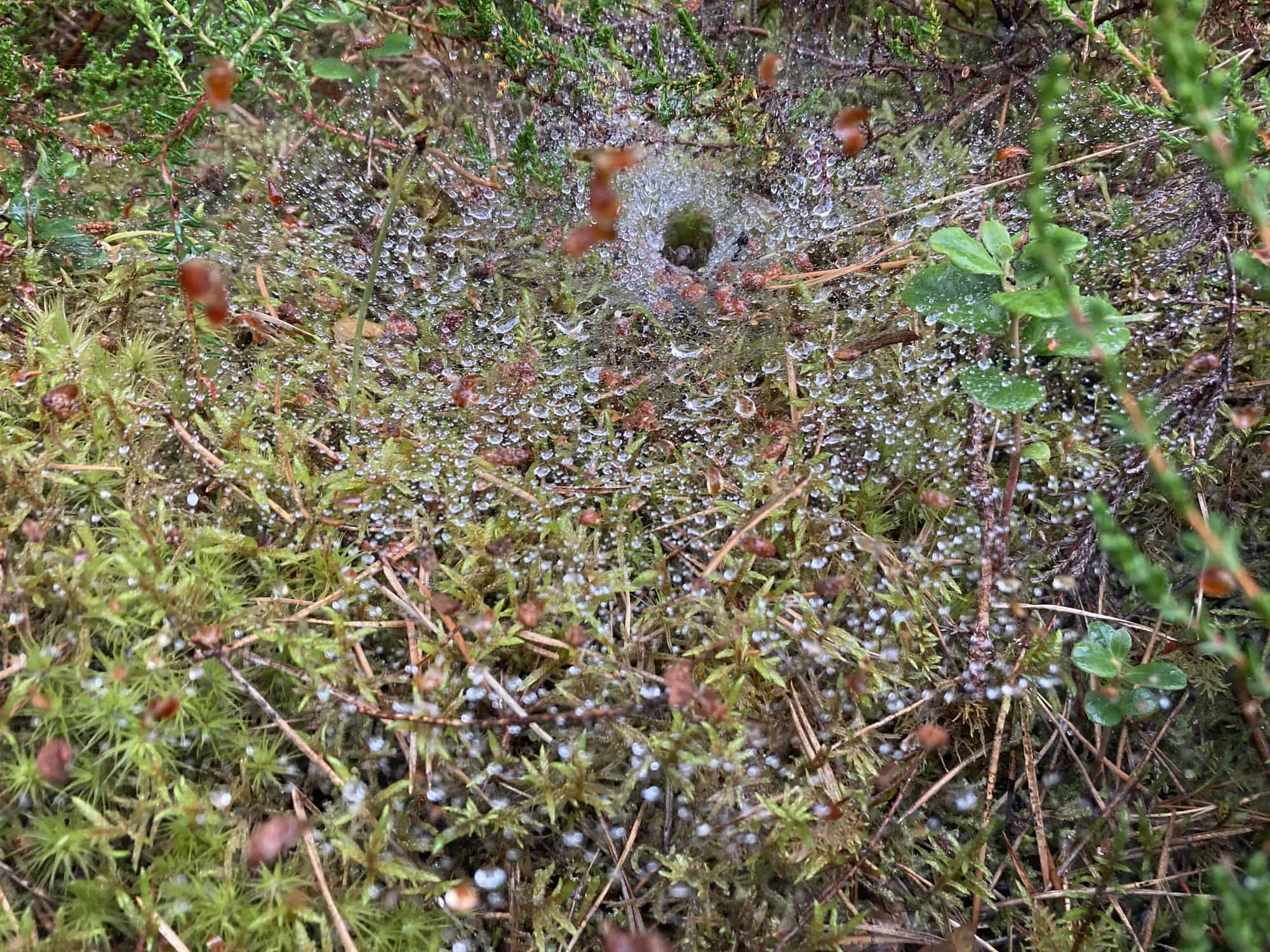
What a typical Sydney Funnel-Web spider’s nest, or web, may look like.
©iStock.com/mdurajczyk
These types of spiders build silk-lined tubular burrow hideaways with collapsed funnel or hole entrances with irregular trip lines over the ground. In some exceptions, they may build trapped doors with two openings. The Sydney Funnel-Web Spider will burrow in their shelters where it is moist and humid. They will typically be under rocks, logs, or rough-barked trees. The female spider will spend most of her time in her silk tube and only emerge when potential prey is presented.
The Sydney Funnel-Web Spider eats:
- Insects
- Frogs
- Lizards
When one of these animals trips over the trapline, The Sydney Funnel-Web Spider will rush out and inject their venom into their prey.
Males tend to wander further out during the warmer months looking for females to mate with. This makes encounters with male spiders more likely. They can be found in backyards, houses, or around swimming pools.
These spiders can actually survive falling into water for up to 24 hours by creating air bubbles for themselves.
How Big Is The Sydney Funnel-Web Spider?
Their size varies from medium to large. They are about 1 to 5 cm (0.4 to 2 inches) long. Female Sydney funnel-web spiders are larger and better built than males. The females have larger abdomens and shorter legs than the males.
Where Does The Sydney Funnel-Web Spider Live?
Sydney funnel-web spiders live mainly in moist, forested upland areas. They bury themselves in tree trunks, stumps, or the ground in a funnel-shaped silk web about 60 cm deep.
Their web entrance is surrounded by many strong strands of silk that normally open into a T or Y shape. These shapes raise curiosity among the unsuspecting prey that easily falls on them.
How Common Are Sydney Funnel-Web Spiders?
Sydney funnel-web spiders are widespread in Australia in that the males are often found wandering in homes and gardens in search of a mate. They also come out of their burrows during wet weather conditions, as they thrive well during such weather conditions.
Since they are usually spotted almost everywhere, the Australian Reptile Park continuously encourages people to collect any Sydney funnel-web spiders they come across and bring them to the park. This is because Sydney funnel-web spiders play a significant role in medicine. Their venom is used to create an antivenom to treat a deadly funnel-web bite.
What Does The Sydney Funnel-Web Spider Eat?

Sydney funnel-web spiders are carnivores whose diet consists of frogs, lizards, snails, and cockroaches.
©Ken Griffiths/Shutterstock.com
Sydney funnel-web spiders are carnivores whose diet consists of frogs, lizards, snails, cockroaches, millipedes, beetles, and other small mammals. They take all their prey at the edge of their funnel-shaped webs – they ambush the prey, bite it, and drag it inside for consumption.
What’s The Reproduction Rate Of The Sydney Funnel-Web Spider?
Male Sydney funnel-web spiders mature in 2 to 3 years. They then leave the web in search of a suitable mate. A female Sydney funnel-web spider lays over 100 eggs in 35 days after mating. She spends most of her time protecting the eggs during the incubation period. The eggs hatch in about 21 days, and the hatchlings stay with their mother for a few months.
How Aggressive Is The Sydney Funnel-Web Spider?
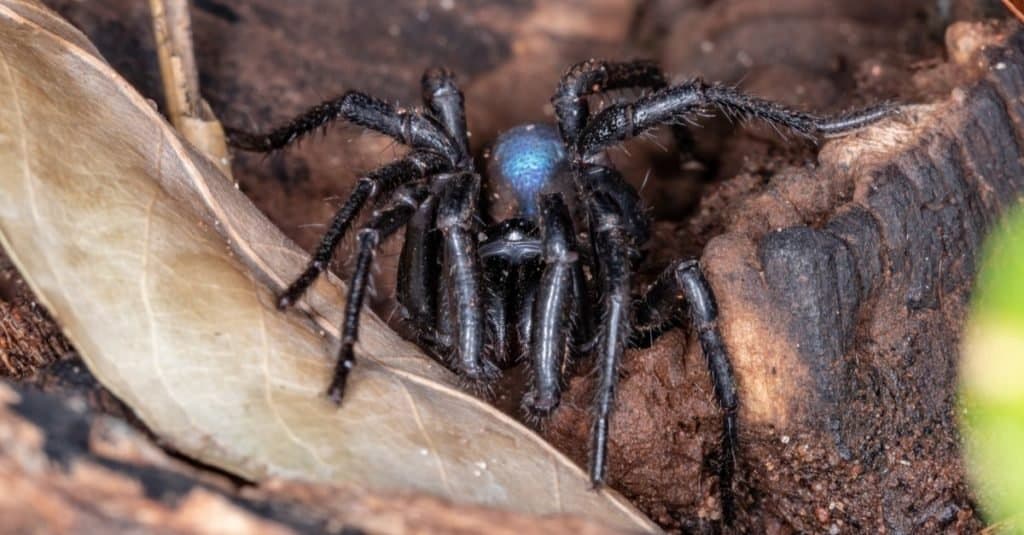
Mouse spiders are a kind of trapdoor spider and are sometimes mistaken for funnel-web spiders.
©Vinicius R. Souza/Shutterstock.com
The Sydney funnel-web spider is extremely aggressive. However, it rarely displays this aggression unless it feels threatened. Sydney funnel-web spiders will do their best to defend themselves by raising their front legs off the ground while showing their huge fangs ready to strike. They bite several times if the assailant doesn’t retreat.
How Toxic Is The Sydney Funnel-Web Spider’s Venom?
Sydney funnel-web venom is highly toxic. The venom contains many other toxins that are collectively called atracotoxins. The venom can kill humans if left untreated. A male’s venom is considered six times more toxic than a female’s. Nevertheless, all Sydney funnel-web species and genders should be considered potentially dangerous.
What Happens When A Sydney Funnel-Web Spider Bites You?
The atracotoxins and neurotoxins in the venom of a Sydney funnel-web spider will affect the nervous system of a bitten person. When a Sydney funnel-web spider bites you, you will experience the following symptoms:
- Twitching of the facial muscles
- Tingling around the tongue and mouth
- Drooling
- Nausea
- Vomiting
- Excessive sweating
- Shortness of breath
- Accumulation of fluid in the lungs and brain in severe cases
These symptoms occur between 10 and 30 minutes after being bitten by a Sydney funnel-web spider. Death happens when too much fluid builds up in the brain, which is called cerebral edema.
How Many Humans Die Each Year From Sydney Funnel-Web Spider Bites?
According to the Australian Museum, Sydney funnel-web spiders bite around 30 people each year. Except for the 13 fatalities documented between 1927 and 1981, there have been no recent deaths from Sydney funnel-web bites. Since then, antivenom derived from the venom of the spider has been created, which successfully treats envenoming within 12 to 24 hours after admission.
Do Sydney Funnel-Web Spiders Have Enemies?
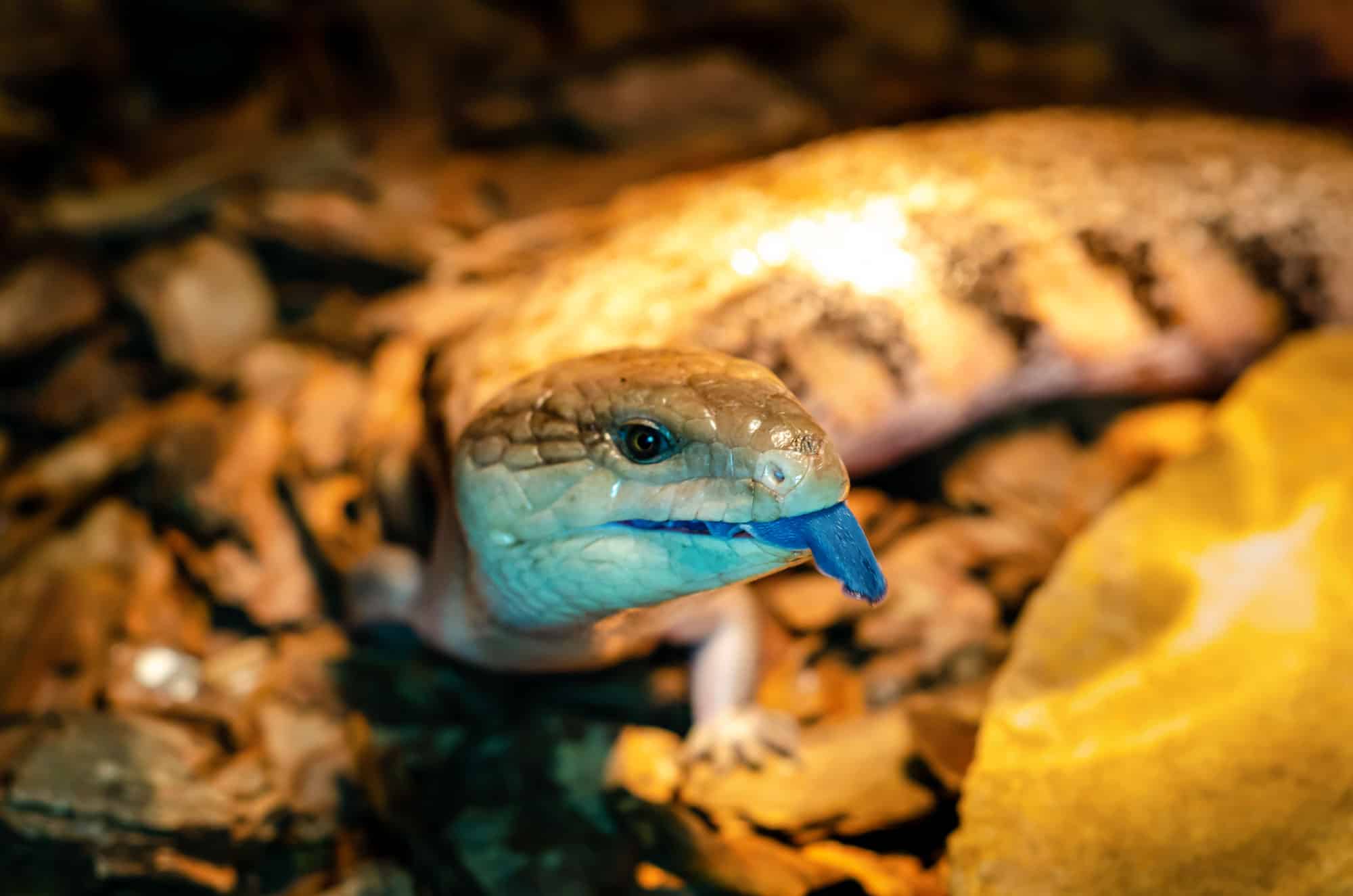
Sydney funnel-web spiders are vulnerable to predators whenever they are out of their burrows. Expert Sydney funnel-web predators are the centipede, blue-tongue lizard, chicken, velvet worms, and flatworms. These predators first immobilize the Sydney funnel-web spiders before eating them.
Other Venomous Spiders
In addition to Sydney funnel-web spiders, there are other venomous spiders whose bites require urgent medical attention. Here are the additional top 8 deadliest spiders in the world that you should be cautious of:
1. The Brazilian Wandering Spider
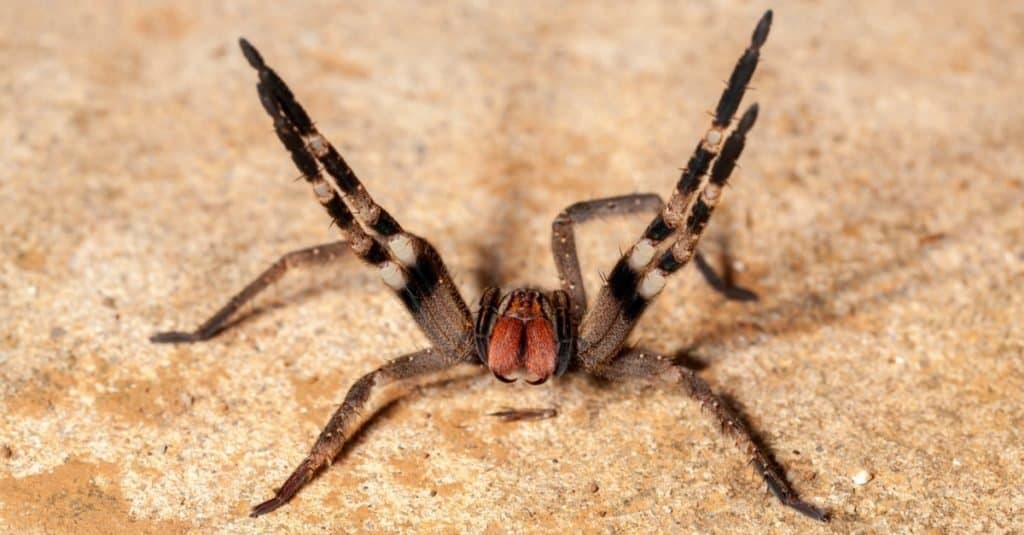
The Brazilian Wandering Spider is found in South America and Central America.
©Tacio Philip Sansonovski/Shutterstock.com
Brazilian wandering spiders are also among the world’s deadliest spiders. They are found in South America and Central America. They are almost as deadly as the Sydney funnel-web spider, but their venom doesn’t kill the victim as fast as the Sydney funnel-web spider.
2. The Chinese Bird Spider
The Chinese bird spider is a deadly spider found in China. Its venom contains neurotoxins that severely affect the victim’s nervous system. Its bite can lead to death if left untreated.
3. The Black Widow Spider
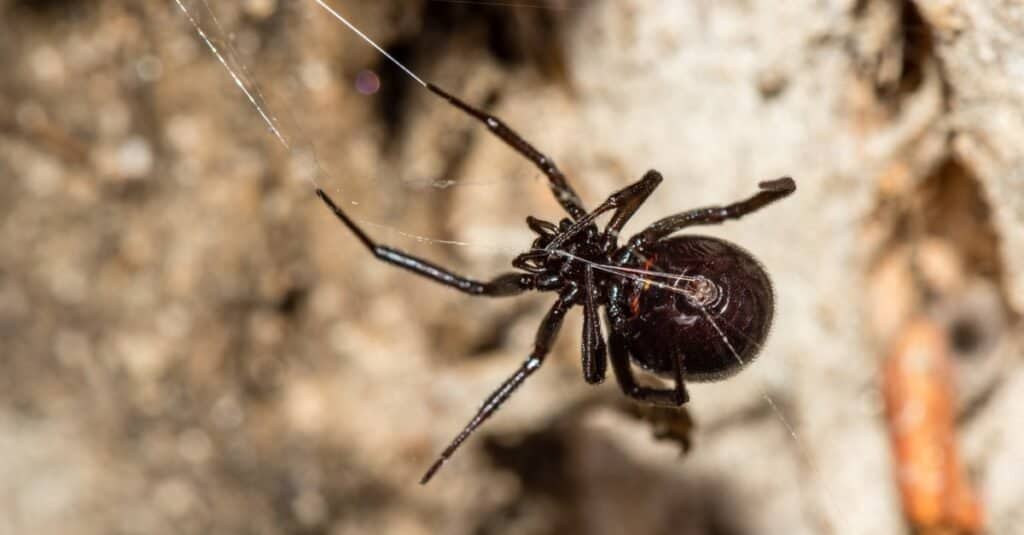
A black widow spider’s venom is not highly fatal to humans.
©Danie Spreeth Photography/Shutterstock.com
The black widow spider is another dangerous spider found in the United States. Although it is among the most venomous spiders globally, its venom is not highly fatal to humans. However, its bite can be harmful. It’s a good idea to get checked out by a doctor to make sure you aren’t in danger because our immune systems are different.
4. The Indian Ornamental Tarantula
The Indian ornamental tarantula is among the most venomous spiders in south-eastern India. There are no recorded deaths from Indian ornamental tarantula bites, though they are still dangerous. The Indian tarantula’s venom causes intense pain and depending on the immune system, the victims might respond differently to the bites. That’s why seeking medical attention is essential when bitten by this type of spider.
5. Redback Spider

The Redback spider’s venom contains neurotoxins that damage the nervous system.
©Peter Yeeles/Shutterstock.com
The redback spider is a highly venomous spider that is native to Australia. The female redback spider contains toxic venom, and it’s known to have killed a few people with a single bite. Its venom contains neurotoxins that severely damage the nervous system.
6. Six-Eyed Sand Spider
The six-eyed sand spider is the most venomous spider found in the sandy places and deserts of South Africa. It’s thought to be the most dangerous spider because its venom can cause severe or even fatal wounds.
7. Brown Recluse
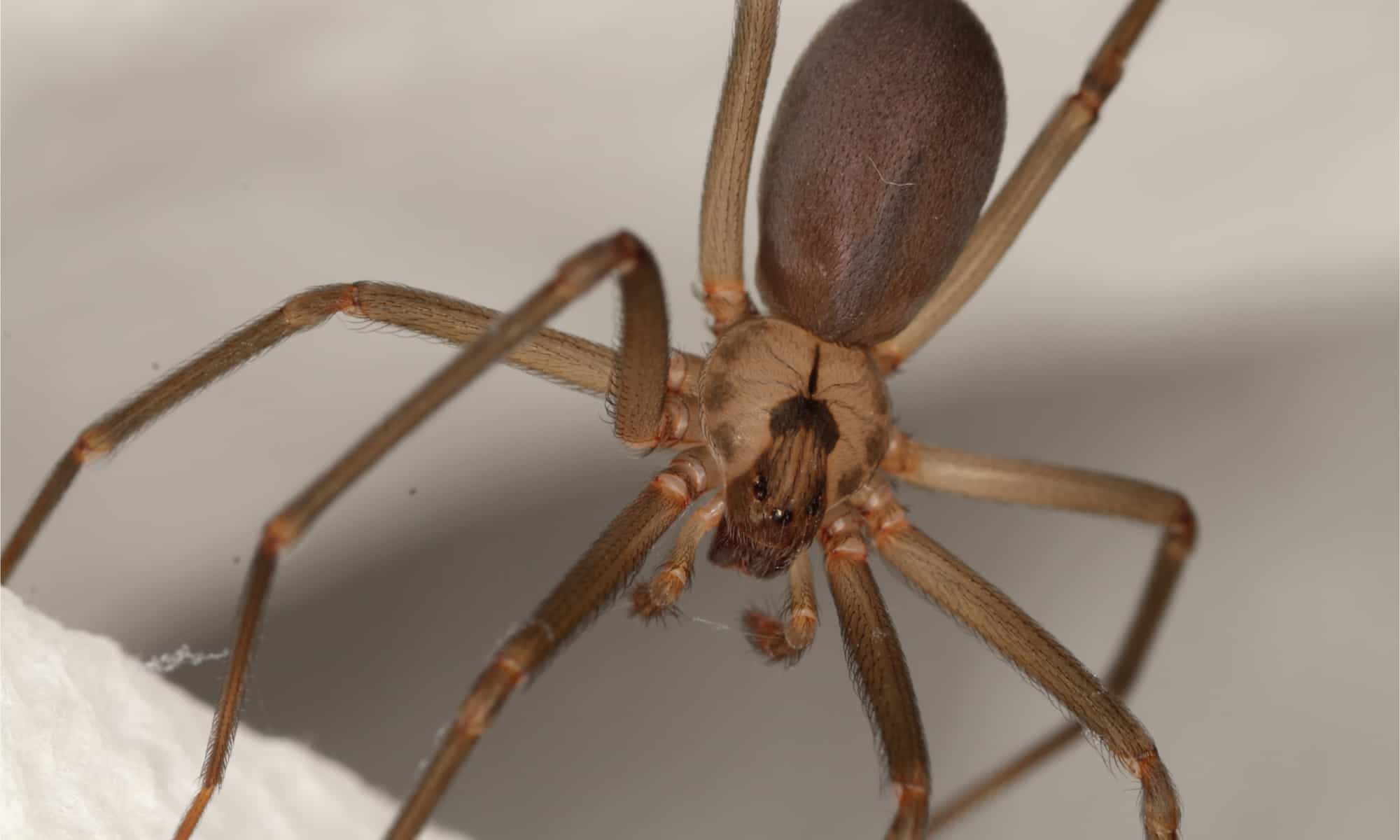
The Brown recluse is among the most dangerous spiders native to the United States. Its venom is very toxic but rarely kills humans. However, it’s best to get medical help as soon as possible because the venom always damages cells and tissues.
8. Yellow Sac Spider

The yellow sac spider is a venomous spider found in the United States.
©Brett Hondow/Shutterstock.com
The yellow sac spider is another venomous spider found in the United States. There is not much to worry about if the wound doesn’t get any secondary infections. However, one should get medical attention if the wound develops into a large surface lesion.
What is the Deadliest Spider in America?

Brown recluse has necrotic venom that can destroy the tissue in the bite area.
©Keith Davis/Shutterstock.com
The brown recluse is native to central and eastern parts of the United States. It is believed to be the most deadly spider in the country, competing against the black widow for top honors. The black widow is believed to have the most painful bite that can cause severe muscle pain and spasms, as well as abdominal cramps, for up to a week, but the brown recluse tops it with its tissue-destroying necrotic venom.
If you have been bitten by a brown recluse, the bite area will be injected with venom that will destroy the tissue in the surrounding area. Symptoms usually appear within two to eight hours and most bites result in little tissue damage, although there is a chance you will have a wound that can be less than five inches across. While deaths from this spider bite are rare, there have been reports of death in children.
The photo featured at the top of this post is © Ken Griffiths/Shutterstock.com
Thank you for reading! Have some feedback for us? Contact the AZ Animals editorial team.







